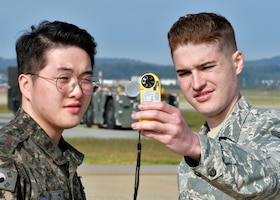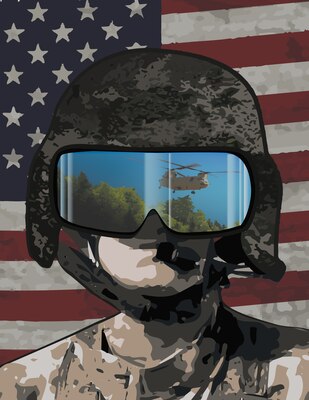By Air Force Staff Sgt. Franklin Ramos, 51st Fighter Wing
OSAN AIR BASE, South Korea, Oct. 10, 2017 — The 51st
Operations Support Squadron Weather Flight based here provides weather warnings
and five-day forecasts preparing the
troops for any weather situation.
Accurate weather forecasting is integral in assisting the
flying units with weather information specific to each mission.
Providing Better Weather Forecasts
Therefore, American and South Korean air force weather
observers stationed here work together to provide better forecasts to the base.
"We work side by side with a South Korea air force
observer that goes out with us during observations, and we both agree on an
observation," said Air Force Capt. Steven Gardner, 51st OSS Weather Flight
commander. "Since we're only here for a year or so, it's nice to have the
South Koreans as partners. They've lived here their whole lives and know the
weather for the local area. By using both our tools and equipment we can
combine all that information to make a better forecast than if we were doing it
by ourselves."
A change in weather can quickly cause a change in plans,
Gardner said.
"Weather impacts everything, to include all military
operations and intelligence, that help leaders make the final decision on
mission execution," he said. "So, being the focal point for all
weather allows us to better inform and help prepare the base."
Working with the South Korean forecasters reduces the time
it takes to formulate forecasts, said Air Force Master Sgt. Omar Nurse, 51st
OSS Weather Flight chief.
"Working with the Koreans is very advantageous for
us," Nurse said. "It allows us to provide a single site picture for
decision-makers to use. Instead of having multiple forecasting, you now have
one between the U.S. and South Korean air forces that helps them come to a
decision quicker."
'One Team, One Forecast'
The main goal for the American and South Korean weather
personnel is to be "One Team, One Forecast," Gardner said.
"Meaning, we are one team working together to make the
best forecast to benefit the fight," he added.
Working together helps to strengthen the U.S.-South Korean
alliance, ensuring its members are prepared for challenges they may face,
Gardner said.
"Better environmental intelligence leads to a
distinctive advantage on the battlefield," he said.










